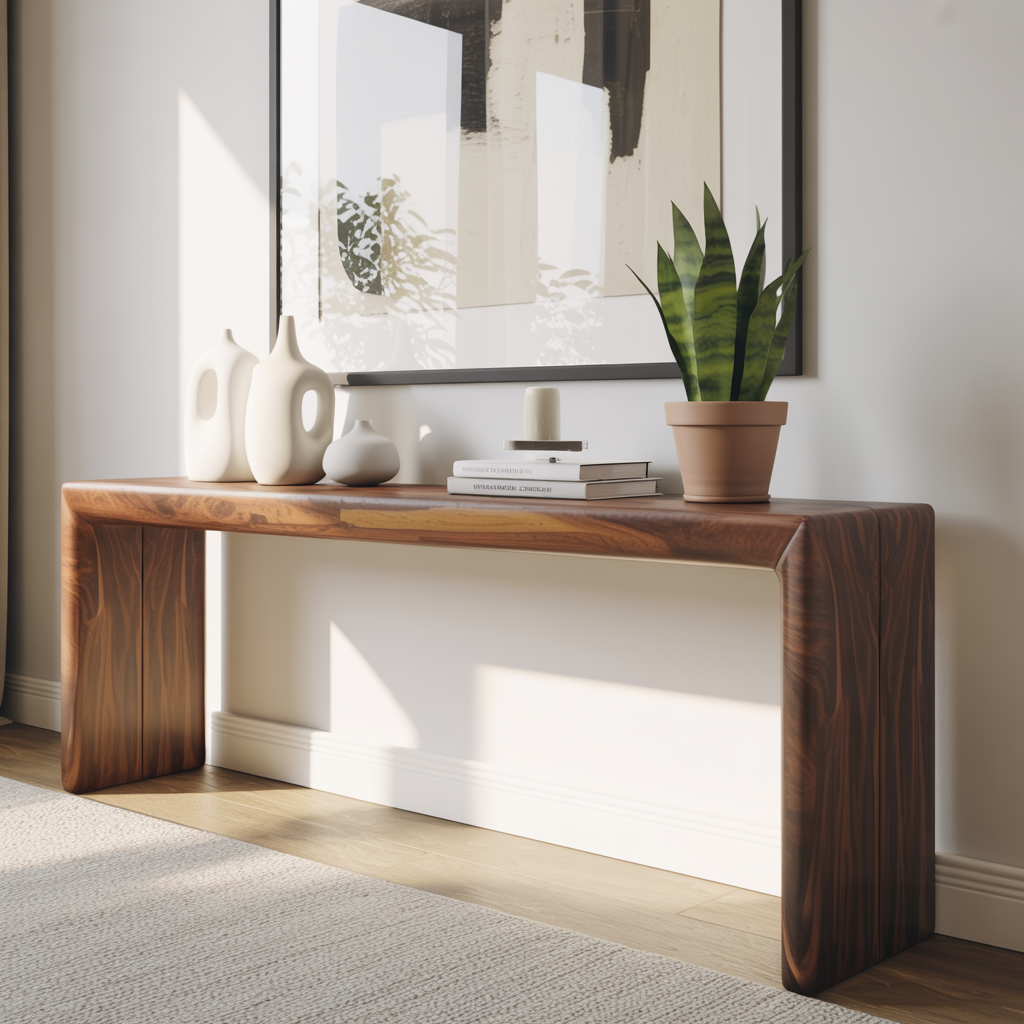A Complete Guide To Console Tables: Design, Placement & Styling Tips
Console tables are the unsung heroes of modern interiors — slim, stylish, and endlessly versatile. Whether placed in an entryway, behind a sofa, or along a hallway, these surfaces create both utility and beauty. In this guide, Inwoodlife explores how to choose, position, and style Console Tables to bring effortless design harmony to your home.
Why Console Tables Matter
Often the first thing guests see, console tables set the tone for your interior style. Their slim profile makes them perfect for narrow spaces, adding personality without overwhelming. Used smartly, they become transition pieces — connecting zones between living, dining, or hallway areas while anchoring decorative focal points like mirrors, artwork, or lamps.Beyond looks, they provide functional surfaces for keys, decor, and daily essentials. Pairing them with matching Coffee Tables or nearby TV Stands keeps your space visually consistent and balanced.
Design Styles for Every Home
Modern Minimalist
Clean lines, matte finishes, and hidden storage define modern console tables. Pair them with simple art and neutral palettes for a calm entryway.
Rustic Natural
Crafted from reclaimed or raw wood, rustic styles add warmth and organic charm. Combine them with woven baskets or linen accessories for a relaxed aesthetic.
Industrial Chic
Mix metal frames with solid wood tops for urban appeal. Black or brass accents give contrast while keeping proportions lightweight.
Classic & Elegant
Curved legs, painted finishes, and glass or marble tops create a timeless silhouette that elevates traditional décor schemes.
Choosing the Right Size & Height
- Height: Standard console height is 30–34 inches, matching most sideboard or dining surfaces.
- Depth: 12–18 inches is ideal for hallways — slim enough for movement, deep enough for décor.
- Width: Balance proportion with wall length; consoles should span half to two-thirds of the space they occupy.
- Clearance: Leave at least 10 inches behind sofas or along walkways to maintain flow.
Tip: Keep top surfaces level with nearby furniture such as Cabinets & Chests to maintain a unified horizon line across the room.
Placement Ideas that Transform a Room
1. Entryway Statement
A console table in the foyer instantly creates a welcoming vignette. Add a mirror above and a small bowl or tray for keys. Choose durable finishes that can handle daily use.
2. Behind the Sofa
Placing a console behind your sofa defines the seating area while offering an extra surface for lamps or books. It’s perfect for open layouts where walls are limited.
3. Hallway Accent
Long hallways benefit from a narrow console paired with artwork or sconce lighting. It breaks monotony and introduces visual rhythm.
4. Dining or Open Living Areas
Use a console as a flexible serving station or to display vases and ceramics. Match finishes with dining furniture for seamless transitions between zones.
Styling Tips for a Balanced Look
A well-styled console feels layered yet intentional. Follow these guidelines to strike the right balance:
- Group décor in odd numbers (three or five) for visual harmony.
- Mix heights — tall lamp, mid-level artwork, low decorative object.
- Add a tray or stack of books to organize smaller items.
- Introduce greenery or natural elements for freshness.
- Leave negative space; avoid crowding the entire tabletop.
For more arrangement ideas and layering principles, explore Console Table Styling — Inwoodlife’s design journal of placement and décor inspiration.
Material & Finish Combinations
The beauty of console tables lies in how they bridge materials. Choose combinations that enhance your home’s architecture:
- Wood + Metal: timeless and sturdy; perfect for contemporary or industrial interiors.
- Wood + Marble: adds luxury and depth, ideal for modern classic spaces.
- Glass + Brass: reflective and refined — lightens darker corners beautifully.
- Natural Wood: warm and organic; blends easily with existing furniture tones.
Coordinate textures with nearby surfaces like your Coffee Tables or side storage pieces for complete design harmony.
Lighting & Wall Pairings
Lighting completes the composition. A single table lamp adds softness, while twin lamps on each end create symmetry. Pair with wall mirrors or framed prints that echo the console’s shape.
Vertical artwork suits narrow tables; wide mirrors open up compact entries.
Quick Buying Checklist
- Measure available wall or sofa-back length before purchasing.
- Confirm comfortable height (30–34 in) for functional reach.
- Balance proportions with adjacent furniture and lighting.
- Decide the purpose — decorative, practical storage, or both.
- Plan styling essentials: lamp, tray, and one sculptural object.
Design a cohesive home with Inwoodlife. Pair Console Tables with Coffee Tables, TV Stands, and Cabinets & Chests for a seamless blend of style, storage, and functionality across every room.

